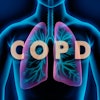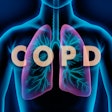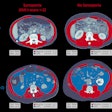
Cancer survival rates for esophagus, stomach, colon, rectum, pancreas, lung, and ovary cancers have improved at varying degrees over the last 20 years in seven high-income countries with universal healthcare, according to research published online September 11 in the Lancet Oncology journal.
Survival rates for 3.9 million cancer cases from 1995 to 2014 in Australia, Canada, Denmark, Ireland, New Zealand, Norway, and the U.K. were assessed as part of the Cancer Survival in High-Income Countries (SURVMARK-2) project and the second phase of the International Cancer Benchmarking Partnership (ICBP), a team of researchers led by Melina Arnold, PhD, of the International Agency for Research on Cancer (IARC).
Although researchers found general improvement in one- and five-year survival rates in these cancers, cancer-specific survival was generally higher in Australia, Canada, and Norway compared with New Zealand, Denmark, Ireland, and the U.K.
"While cancer survival and prognosis continue to improve across these high-income countries, the disparities we see are likely due to the stage of the disease at diagnosis, the time it takes to get effective treatment, and the effect of other concomitant health conditions," Arnold said in a statement from Lancet.
The researchers utilized population-based cancer registries to compile their analysis. Overall, they credited the general improvement in cancer survival rates to healthcare reforms and technological advances that enable earlier diagnosis, more effective and tailored treatment, and better patient management.
"Improvements in surgical techniques and new guidelines including preoperative radiotherapy as well as better diagnosis and scanning, enabling better staging of cancers and selection for targeted therapies, have all improved patient outcomes," Arnold said.



















